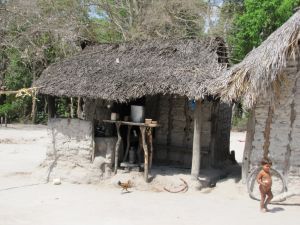
The objective of preparing the Human Development Index is to provide a counterpoint to another widely used indicator, the Gross Domestic Product (GDP) per capita, which considers only the economic dimension of development. The HDI is important to combine the other three basic indicators: life expectancy at birth (longevity), income (income) and education (education), with a key index of the "Millennium Development Goals, United Nations ".
 In Brazil, the HDI has been used by the federal government through the Municipal Human Development Index (HDI-M), which can be found in the Atlas of Human Development in Brazil (UNDP, 2011). The HDI values range from 0 to 1 and the closer to 1 for its value, the greater the level of human development. HDI to 0.499 informs a low human development indices between 0.500 and 0.799 are medium human development and greater than 0.800 inform a high human development (UNDP, 2011). The databelow refer to the HDI-M survey conducted for the years 1991 and 2001.
In Brazil, the HDI has been used by the federal government through the Municipal Human Development Index (HDI-M), which can be found in the Atlas of Human Development in Brazil (UNDP, 2011). The HDI values range from 0 to 1 and the closer to 1 for its value, the greater the level of human development. HDI to 0.499 informs a low human development indices between 0.500 and 0.799 are medium human development and greater than 0.800 inform a high human development (UNDP, 2011). The databelow refer to the HDI-M survey conducted for the years 1991 and 2001.
The AC data from Human Development Index indicates that the average HDI-M target area varies little in the universe of data, with a slight positive drain to the municipality of Santa Tereza do Tocantins and very negative (difference of 0.171 in relation to average) São Félix do Tocantins (0.248 difference between the two cities), both towns in the state of Tocantins. Regarding the evolution of the HDI-M between the years 1991 and 2000, there was an increase in all the municipalities studied, but there is a strong increase in the municipalities of São Félix do Tocantins (67,40%), Mateiros (33,03% ) and Rio da Conceição (28,60%) and the low increase in the HDI-M of Rio Sono (8,68%) and Santa Tereza do Tocantins (8,97%).
The fact that all these municipalities are tocantinenses indicates that there is no in state of Tocantins in a homogeneous pattern of increase in human development of its population between the years considered, to the contrary. The indicators of income, longevity and education have evolved between 1991 and 2000 in all municipalities, and with great emphasis on the education variable, which showed significant values in São Félix do Tocantins (249,78% excellent), Mateiros (71,66%) and Rio da Conceição (44,58%).
In Education index, the lowest value was 11,08% in Santa Tereza do Tocantins. Gilbués (PI), Lagoa do Tocantins and São Félix do Tocantins (TO) cumulatively account for more than 60% of growth rate and longevity and Rio da Conceição, Mateiros and São Félix do Tocantins (TO) together also make up 60% of the increase in HDI values for the index of income. Finally, the finding on the values of regional HDI-M and its components are positive, with increases in the period 1991 to 2000 for all municipalities, although this growth is not present as homogeneous as it should be checked, especially when it considers the municipalities within the same state, be it the Tocantins and Piauí.
1 Although outdated, the data show the evolution of HDI (or backward) temporal region with respect to the variables considered.